Human dating rituals may often seem strange, confusing and not-at-all productive. But the next time you’re wondering if you should wait three days to call, or if you talked too much at dinner, be thankful you aren’t worried you would become dinner.
The male praying mantis knows each time it approaches a female to mate might be its last day on the planet, says Jennifer Verdolin, author of Wild Connection: What animal courtship and mating tell us about human relationships and a featured guest on the D.L. Hughley Radio Show’s “Think Like a Human, Act Like an Animal.”
“If he decides she is ok, he mates with her,” Verdolin says. “If he’s right, he drops off, if he’s wrong, she bites his head off.”
Literally.
Fortunately for the animal kingdom, not all mating habits are quite so vicious, Verdolin adds. Many involve offerings of gifts or dancing, other stories tell of fidelity or affection. And some mating rituals are familiar to anyone who watches their backyard, or nature documentaries. But there are lesser-known ones that are strange, endearing and even alarming.
To celebrate humans’ upcoming holiday of love and romance, I asked Verdolin and other biologists for tales of fascinating animal mating habits.
-
Prairie Voles
Monogamous Unless Drunk
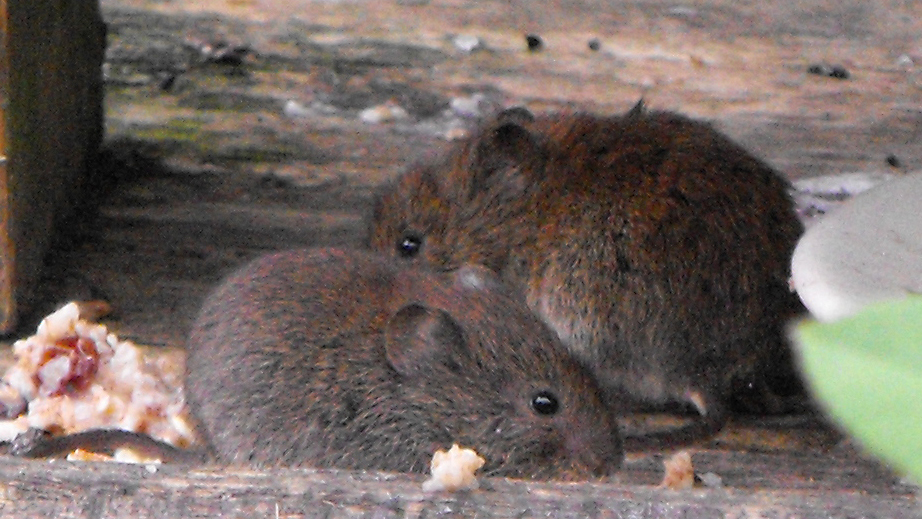
Prairie voles. Photo © Dave Challender through a Creative Commons license When monogamous relationships come to mind, we typically think of geese, swans or humans. Rarely do we think of prairie voles. But the tiny mammals are actually quite faithful and affectionate, says Verdolin.
“A recent study showed when their partner is stressed they give them the equivalent of prairie vole hugs and kisses,” she says. “They will spend upwards of 50 to 60 percent of their time together if not more.”
If a member of either sex approaches the happy couple, they will chase him or her away. Unless, of course, the male is drunk. Researchers in Oregon tested the critters’ fidelity while under the influence and found females will become closer to their mates but drunk males will wander.
-
Nursery Web Spiders
Beautiful Gifts, Lying Males

A female nursery web spider consumes a male after mating. Photo © Tony Court / Flickr through a Creative Commons license Nothing says “I love you” to a nursery web spider like a little bundle of food wrapped in pretty, white silk. The males bring their gifts to females as a request to mate, Verdolin says.
The female inspects the parcel, and if she accepts, he mates with her while she unwraps and eats the meal. Except research shows the male often lies. If he gets hungry before he brings the gift, he sucks out the food and presents a beautifully-wrapped exoskeleton. “Sometimes they don’t even bother with an exoskeleton,” she says. “They use a twig. Sometimes the females weighs it, but is still fooled by how pretty the wrapping is.” When she finds out, the relationship ends. Immediately.
-
Bluegills
Nice Guys Finish First
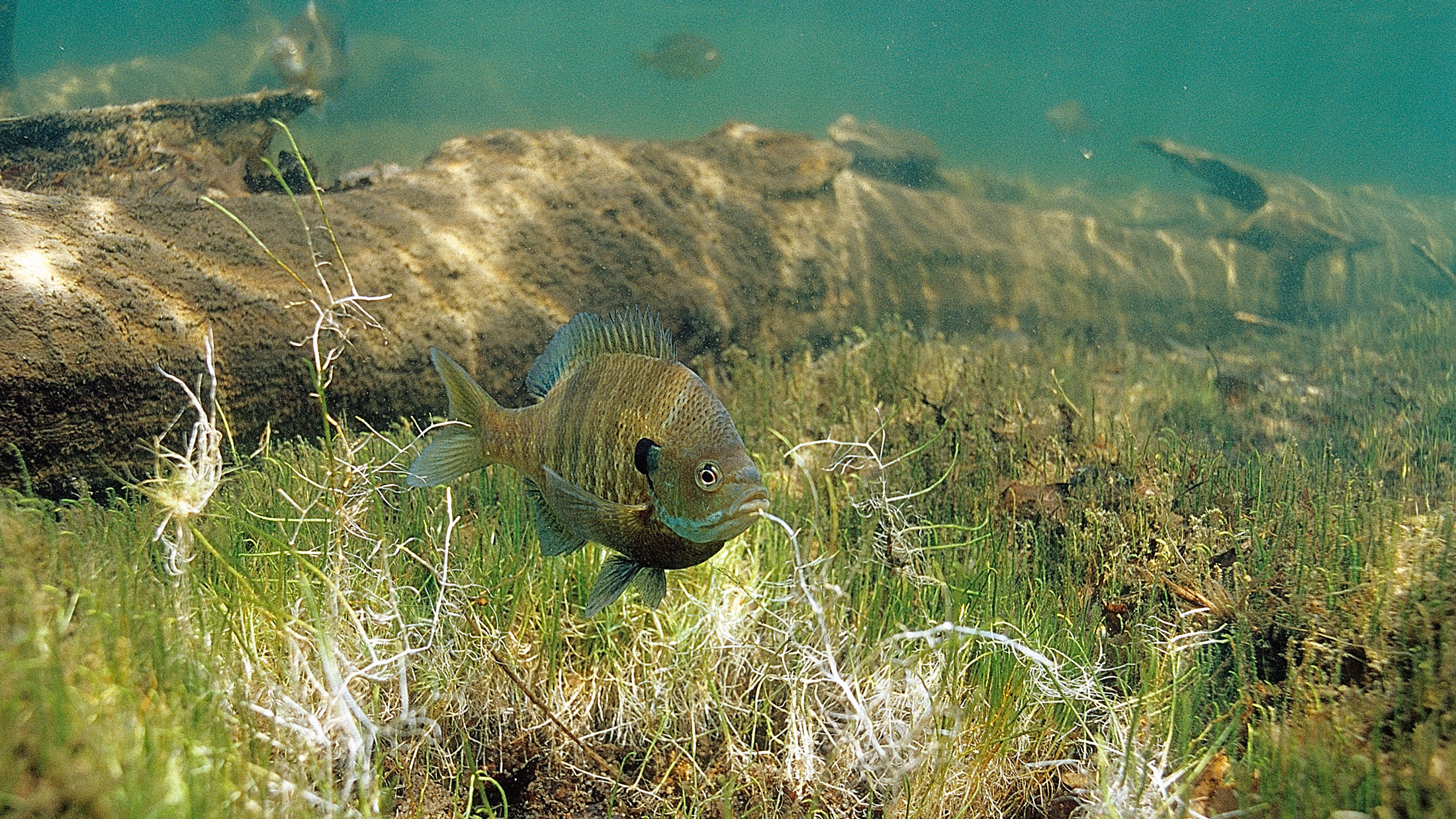
A male bluegill guards his spawning bed. Photo © Eric Engebretson / Engebretson Underwater Photography used with permission Many fish species have what biologists call territorial males and sneaker males. The territorial ones will defend their females and eggs from another approaching, aggressive male. The sneakers, which are typically smaller, weaker males, will wait on the outskirts and approach right when the female lays eggs, says Lisa Angeloni, an associate professor at Colorado State University.
But bluegills have a third category of male breeding behavior called female mimics, which are generally older sneaker males. “They look like females and can get close to a territorial male who is trying to fertilize the eggs,” she says. “He will think he is getting another female.”
-
Hangingflies
The World’s Most Unusual Dinner Date
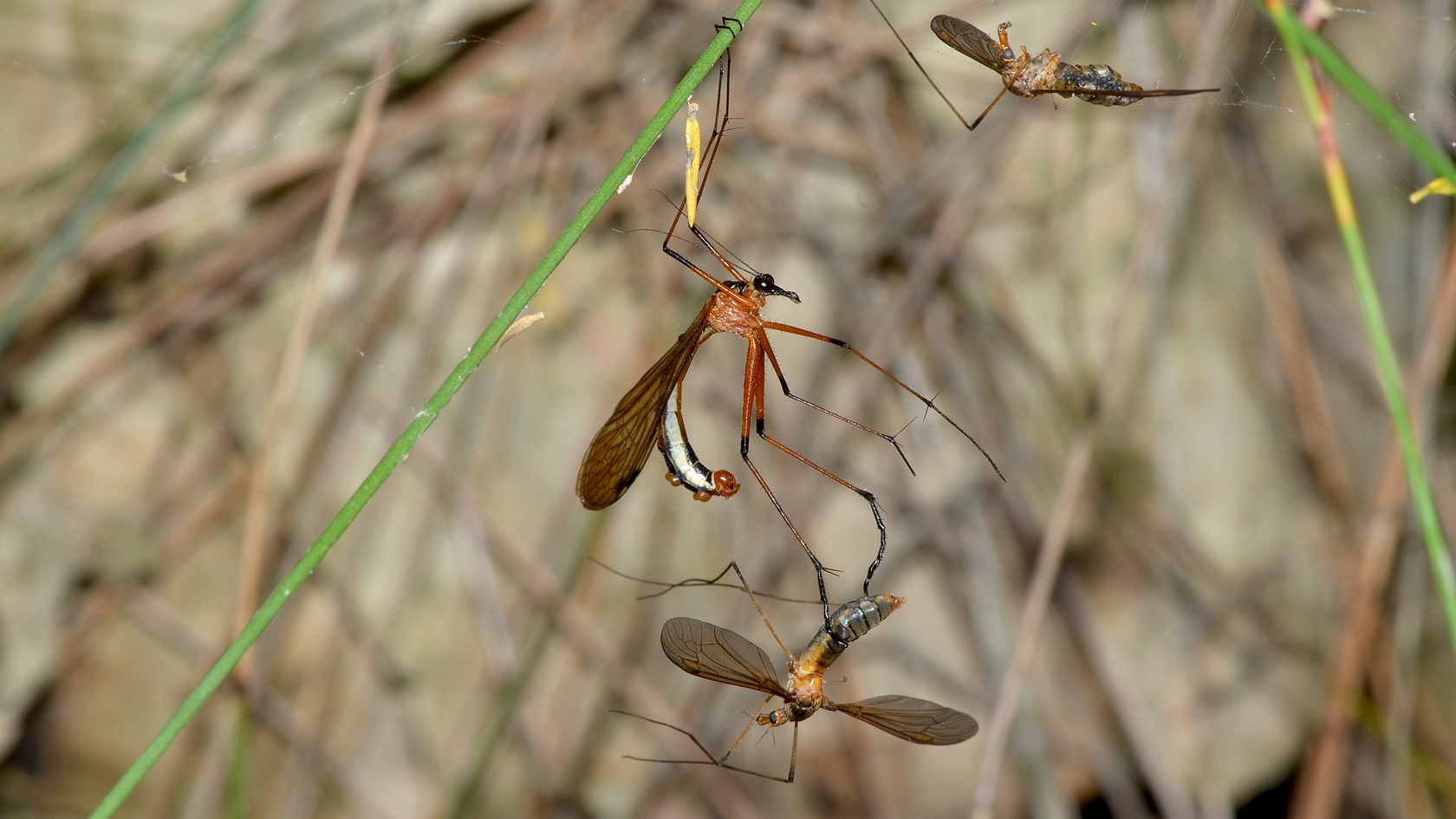
A hangingfly has caught a crane fly as a gift for a female. Photo © Jean and Fred / Flickr through a Creative Commons license Quantity is key in this relationship. The male hangingfly must find a large enough insect to keep his chosen female busy eating while he mates with her. It takes about 20 minutes for her sperm storage organ to fill, says Angeloni.
If she runs out of food before he’s done, she kicks him off and sends him packing. But if her storage unit fills up before she is done eating the insect, “He’s no longer interested in mating her and will take the food and regift it to someone else.”
-
Sea Slugs
Extreme Fencing
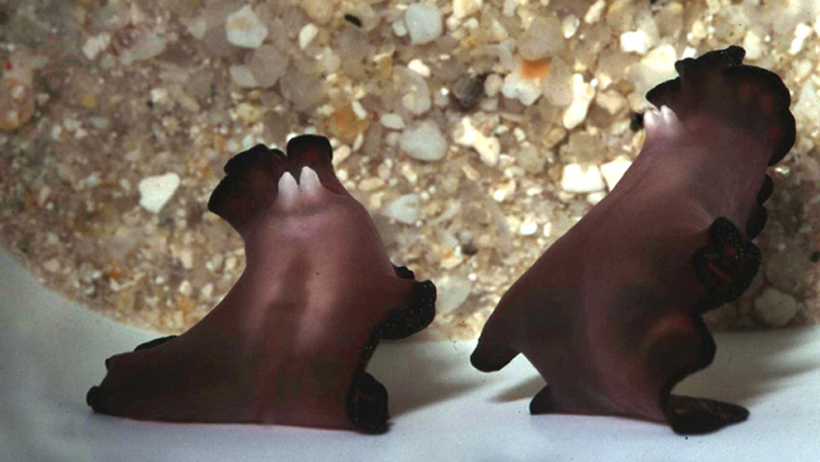
Photo courtesy of Nico Michiels. [CC BY 2.5 (http://creativecommons.org/licenses/by/2.5)], via Wikimedia Commons They may be tiny, but the Alderia modesta will fight epic battles. The slugs are simultaneous hermaphrodites, which means they have both male and female reproductive systems.
Wars are waged to decide who will carry eggs and who will fertilize, says Angeloni, who studied the slugs for her doctorate research. The fights are casually called penis fencing. “They appear as though they’re trying to stab each other without being stabbed themselves,” she says. Sperm can be injected anywhere on the animal to fertilize eggs.
Actual mating lasts about five minutes before one or the other finishes and slinks away.
-
New Mexican Whiptail Lizard
Simulated Sex
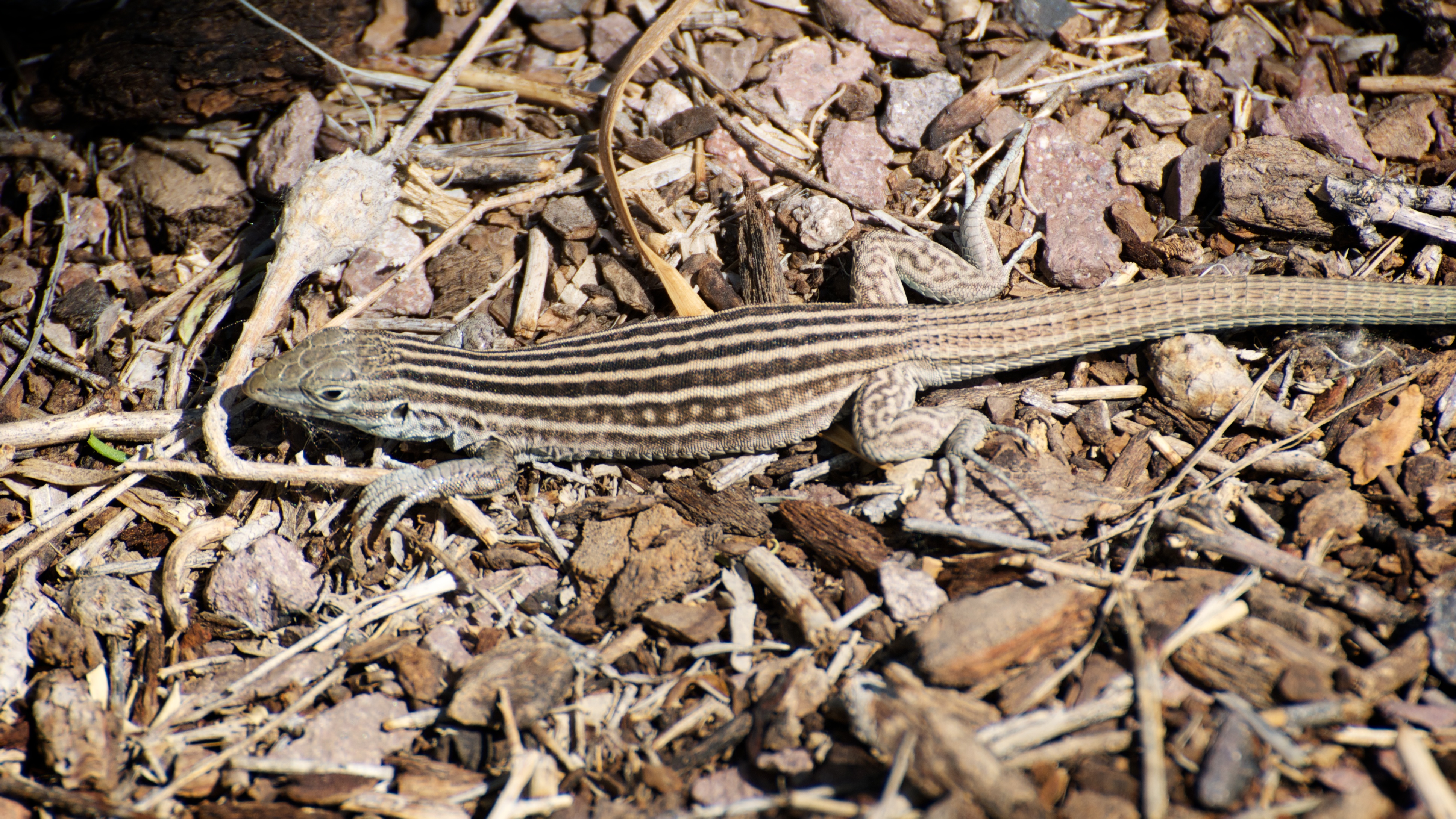
New Mexico Whiptail (Cnemidophorus neomexicanus). Photo © Roger Shaw / Flickr through a Creative Commons license Mating rituals for these lizards are particularly interesting, because there aren’t any. The entire New Mexican whiptail lizard species found in the southwest U.S. and Mexico is exclusively female.
The species resulted from a hybridization of two other lizards, and because it has double the chromosomes as other lizard species with males and females, can maintain its genetic diversity, according to a 2010 study published in the journal Nature. “But even though they are only females and don’t need males to reproduce, they still engage in simulated sex,” says Verdolin. “And the ones that do engage in simulated sex have more babies.”
-
Adelie Penguins
Rocking It

Adelie penguins gather rocks to go courting. Photo © Robert Nunn / Flickr through a Creative Commons license Not all gifts involve food. A male Adelie penguin, living along the Antarctic coast, collects little rare rocks to present to his beloved. The female uses the rocks to line her nest, and if she likes the rock, she will allow him to mate with her, Verdolin says. Unfortunately for the poor male, if he wanders off and another male presents a rock, she will mate with him, too.
-
Hooded Seals
Pink Balloon Battles
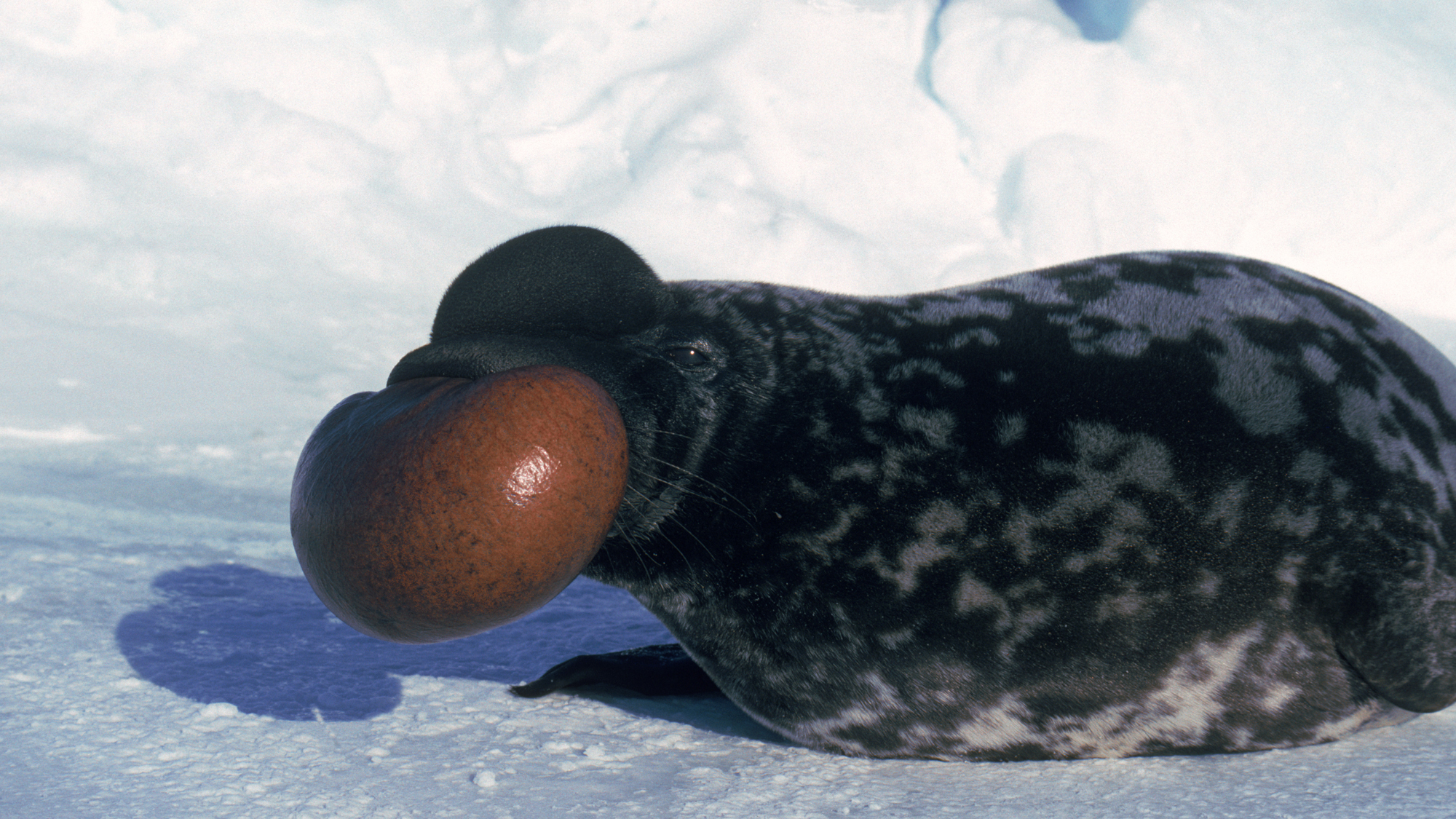
Male Hooded seal nasal display, St Lawrence Gulf, Canada. Photo © Doug Allan Fighting over females is common in many species. Elk and deer will sometimes lock together and struggle until one, or both, are killed. Male hooded seals are no different except their first display of prowess comes in the form of large, inflatable pink balloons on their faces.
“Those balloons are sexually selected in this species and males have contests over females,” according to Verdolin. “The winner gets the girl (though the girl may mate with another male too).” When they’re done fighting, the bag deflates for mating. Until the next battle, of course.
-
Bowerbirds
Dance and Decorate
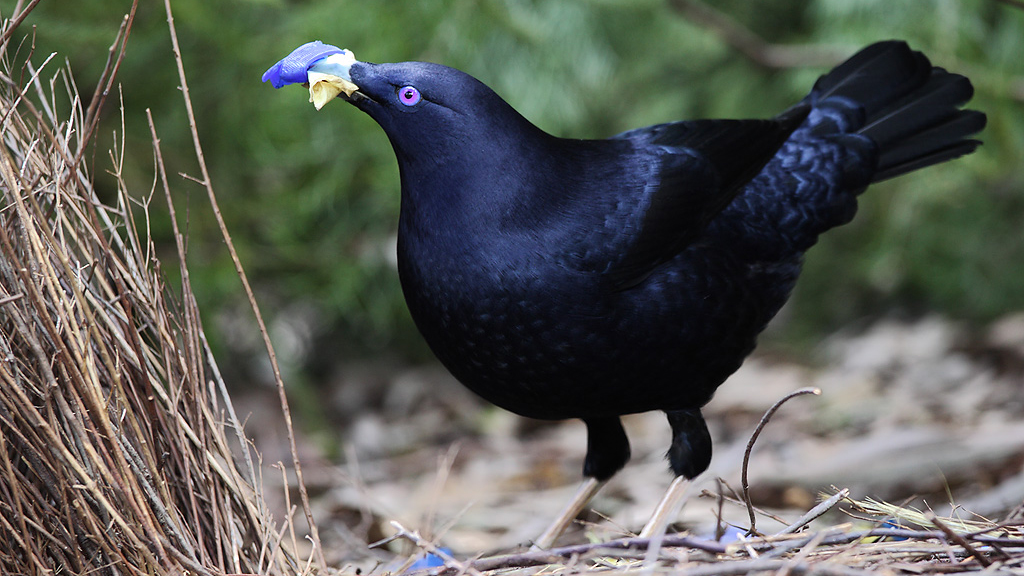
A mature male Satin Bowerbird performing his courtship routine at the Australian National Botanic Gardens in Canberra. Photo © Leo / Flickr through a Creative Commons license Female bowerbirds are less impressed with athletic prowess than they are the male’s ability to dance and decorate. During courtship, male satin bowerbirds build nuptial bowers – which look a bit like towers of sticks – and decorate them with exclusively blue objects. “They will fight, scrap, steal and destroy each other’s structures,” Verdolin says. “They will steal anything blue, and it doesn’t have to be natural, it can be ribbon or plastic, and then the females will go around and inspect them.”
If the female approves of the blue creations, the male then has to dance for her. During some experiments, researchers have placed red objects on the bowers and found females choose smarter males, the ones most able to remove red items.
-
Sage Grouse
Strut, Puff and Pop
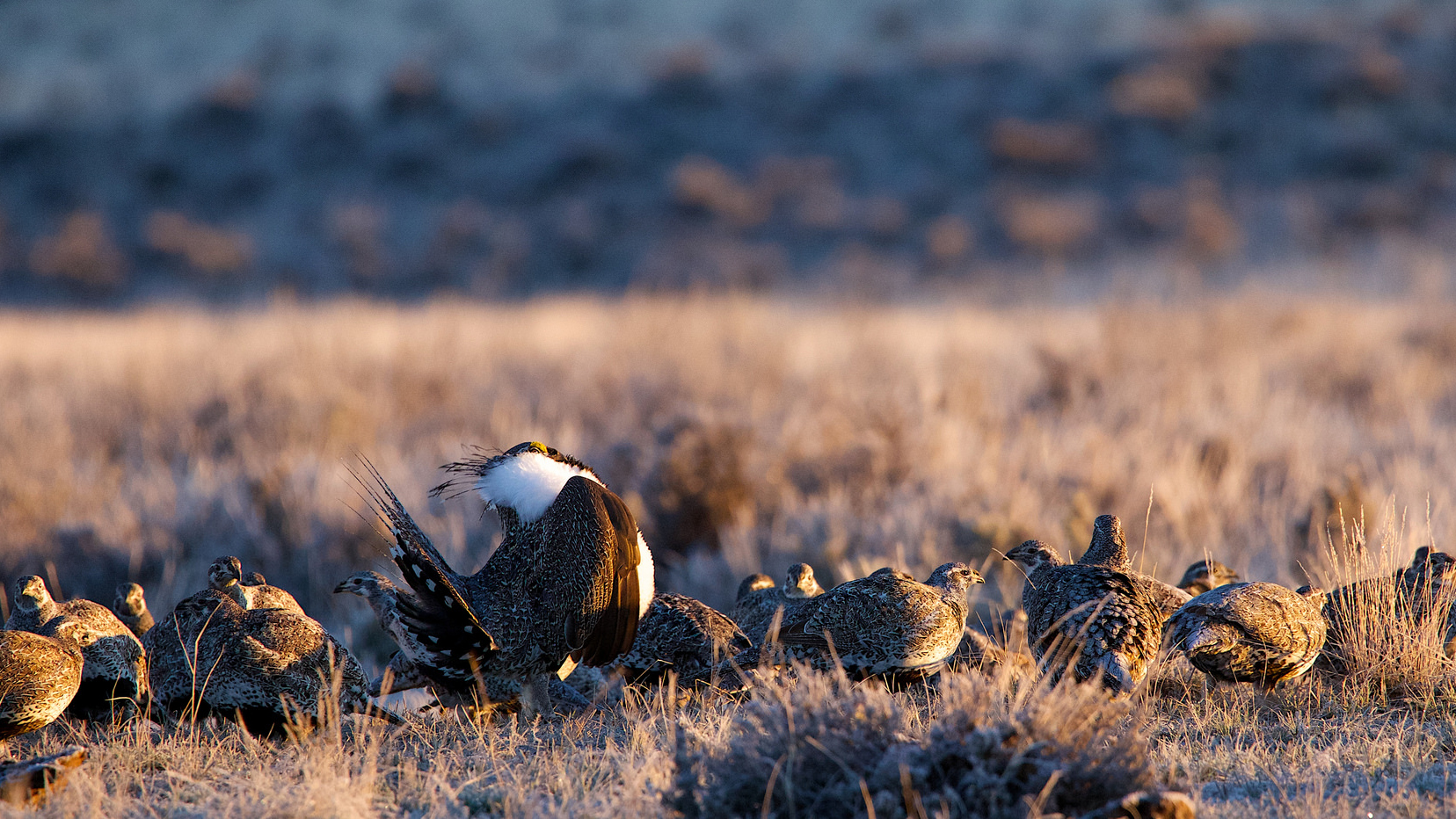
Scenes at a sage-grouse lek in breeding season. Fremont County, Wyoming. Photo © Alan Krakauer / Flickr through a Creative Commons license Imagine a bar in a rural prairie town packed with testosterone-filled men puffing their chests and doing their best to run each other off. Now put that bar in the middle of the western sage brush and swap out humans for a chicken-sized brown bird called sage grouse.
Each year, male grouse gather on leks to fan their tail feathers like peacocks, blow up their chests and make strange popping sounds in hopes of attracting a mate. Female grouse wander in, appear ambivalent and decide, or not, on the right mate. Dozens or even hundreds can gather at the same time, only to finish by mid-morning, wander in to the sage and wait until the next day.
Which quirky critter matches your Valentine’s style most?
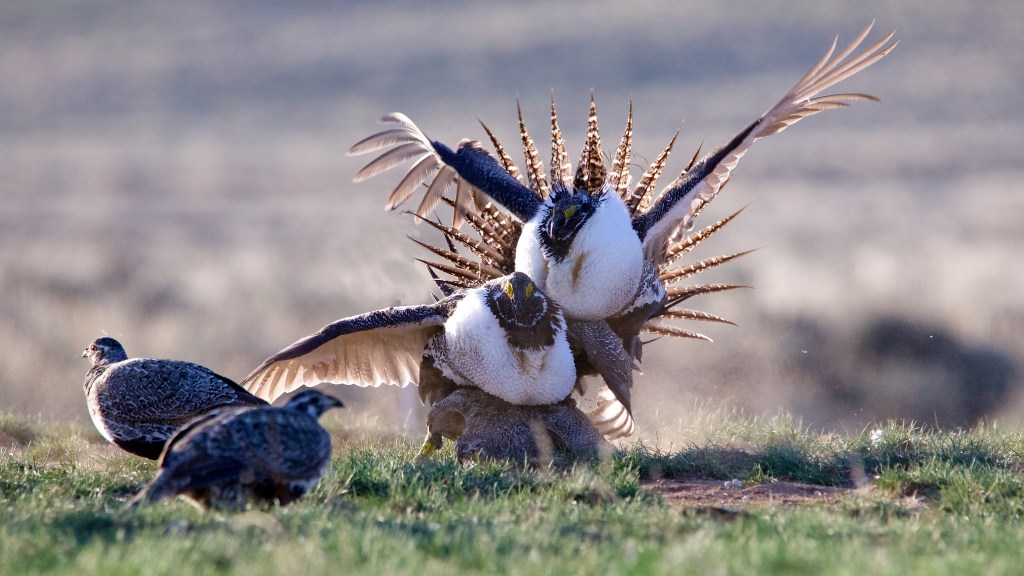



nature is really good and interesting
Very fun!
very educated, thanks
All great actions and thoughts have a negligible beginning.
very fun!indeed
I think you need to find more research
Thank you for the wonderful piece. Keep up the writing!
Extremely interesting but…why would a so-called ‘researcher’ subject prairie voles to becoming drunk? To what end since seems pointless & who would supply funding for such so-called research?
Yeah, I wondered about the “drunk” voles, too. That does NOT sound like necessary “research”! I’ve read much about the sage grouse & how very vulnerable the fossil fuel industry and the livestock industry has made them. Certainly there is much less protection now with Zinke in charge!
Hi Maggie & M, The research intent is not to study drunk voles per se, but to look at voles as a way to study the effects of alcohol in human relationships. This page for Andrey E. Ryabinin, who leads the research explains why they use voles in the study: http://www.ohsu.edu/xd/education/schools/school-of-medicine/academic-programs/graduate-studies/faculty/grad-studies-faculty.cfm?facultyid=315
Gifts for intercourse. Universal. I wonder what aliens do.